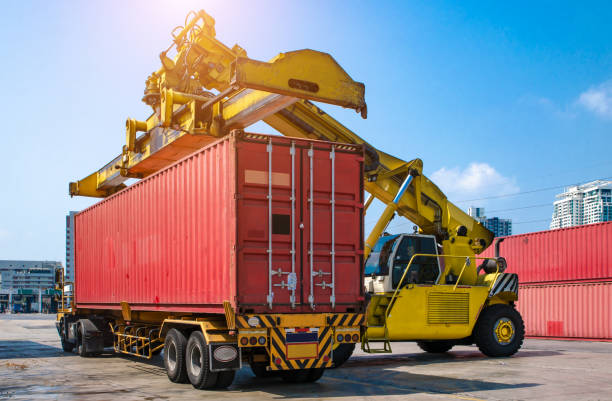
Container handling Adelaide is a workmanship idealized throughout the long term by terminal administrators around the world. Regulating holder developments inside a terminal involves three key parts. The main part connects with sea activities. The objective here is to limit transport completion times, and the terminal needs to adjust to the delivery lines’ timetable dependability. The docking region, known as the billet, is planned with explicit specialized details, for example, length and draft to oblige vessels. Holder cranes express the connection point between the containership and the harbor. Cranes have specialized determinations with respect to the quantity of moves each hour, most extreme weight, and parallel inclusion. A cutting edge holder crane can have a 18-24 wide reach, inferring that it can support a compartment vessel having a width of 18 to 24 holders. A gantry crane can perform around one development (stacking or dumping) like clockwork. The bigger the quantity of cranes doled out to the transhipment interaction, the quicker it can happen. Be that as it may, powerful portside capacities should be available to adjust this throughput. In any case, terminal computerization has presented robotized holsters that pull holders from the dockside to stacking regions. In the long run, container handling Adelaide incorporates the protected and productive stacking and dumping of compartments from vessels, their development inside the terminal, and their last exchange onto trains, trucks, or different specialties. Mechanization has presented a stage change in holder taking care of effectiveness. From gantry cranes that can be worked from a distance to cutting edge programming frameworks that track and oversee compartment development continuously, innovation has changed container handling in Adelaide in manners unfathomable only years and years prior. Present day holder terminals influence innovations like Terminal Tracker, a game-changing programming arrangement that upgrades container handling Adelaide tasks. These frameworks can screen holder developments progressively, permitting fast work process changes and further developed stock exactness.
Overcoming any issues in conatiner handling
Compartment terminals work with freight development and extension the essential hole among land and ocean, neighborhood ventures, and worldwide business sectors. That is the reason they are pivotal in the store network, guaranteeing consistent and proficient vehicle of our day to day supplies to where they are generally required. Indeed, even with the ascent of innovation and mechanization in Industry 4.0, it’s urgent to perceive that non-robotized activities that follow conventional strategies are as yet huge. Compartment terminals that depend on human aptitude keep on being significant players in worldwide exchange, displaying their strength and accuracy. Right off the bat, it’s essential to recognize that the container handling Adelaide process is a strategic wonder. Moving great many TEUs consistently is an intricate interaction that requests incredible luck, accuracy, and collaboration. In conventional terminals, experienced terminal administrators complete these errands as opposed to depending on machines. The cycle starts with oceanic tasks, where human booking specialists guarantee short boat completion times by fastidiously arranging and changing the timetable of transportation lines. On the compartment, dockworkers execute the exact undertaking of docking vessels as indicated by unambiguous specialized necessities. For more information please contact: steadfast.net.au